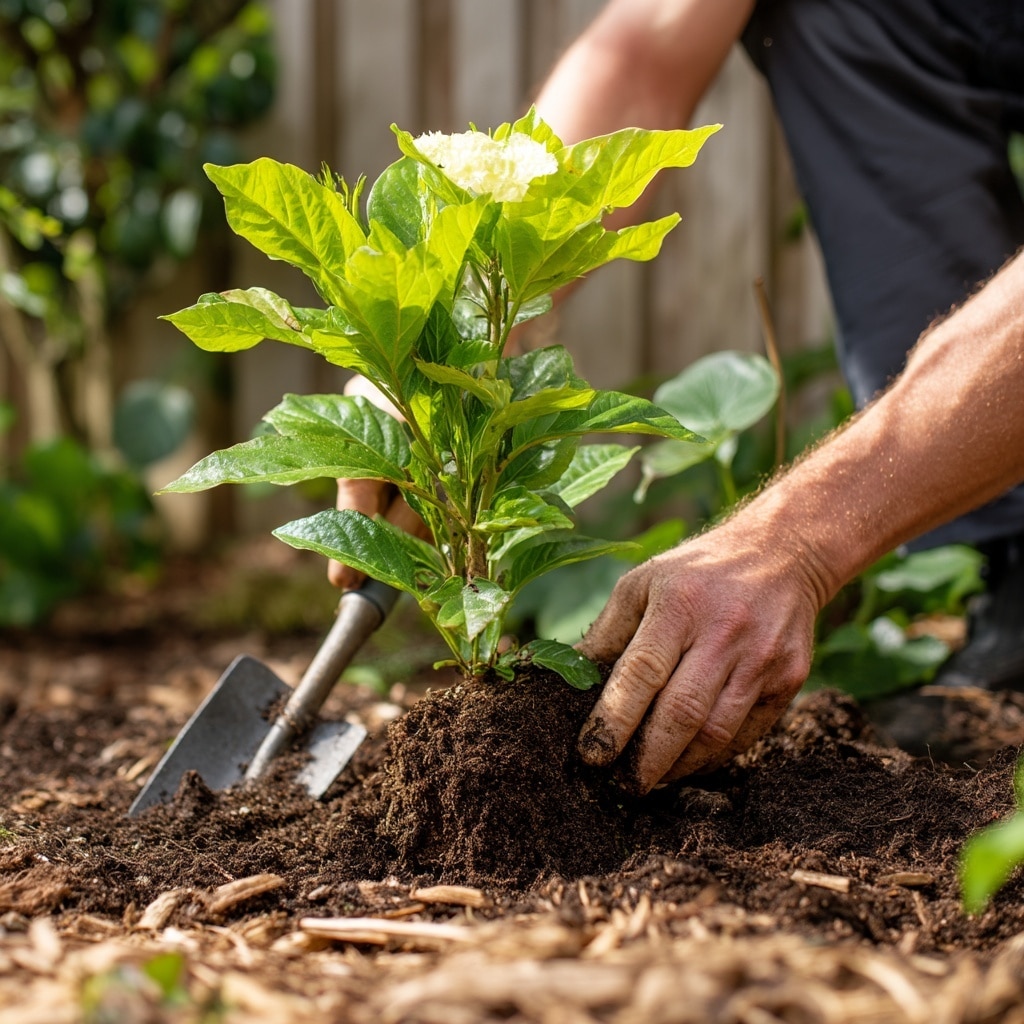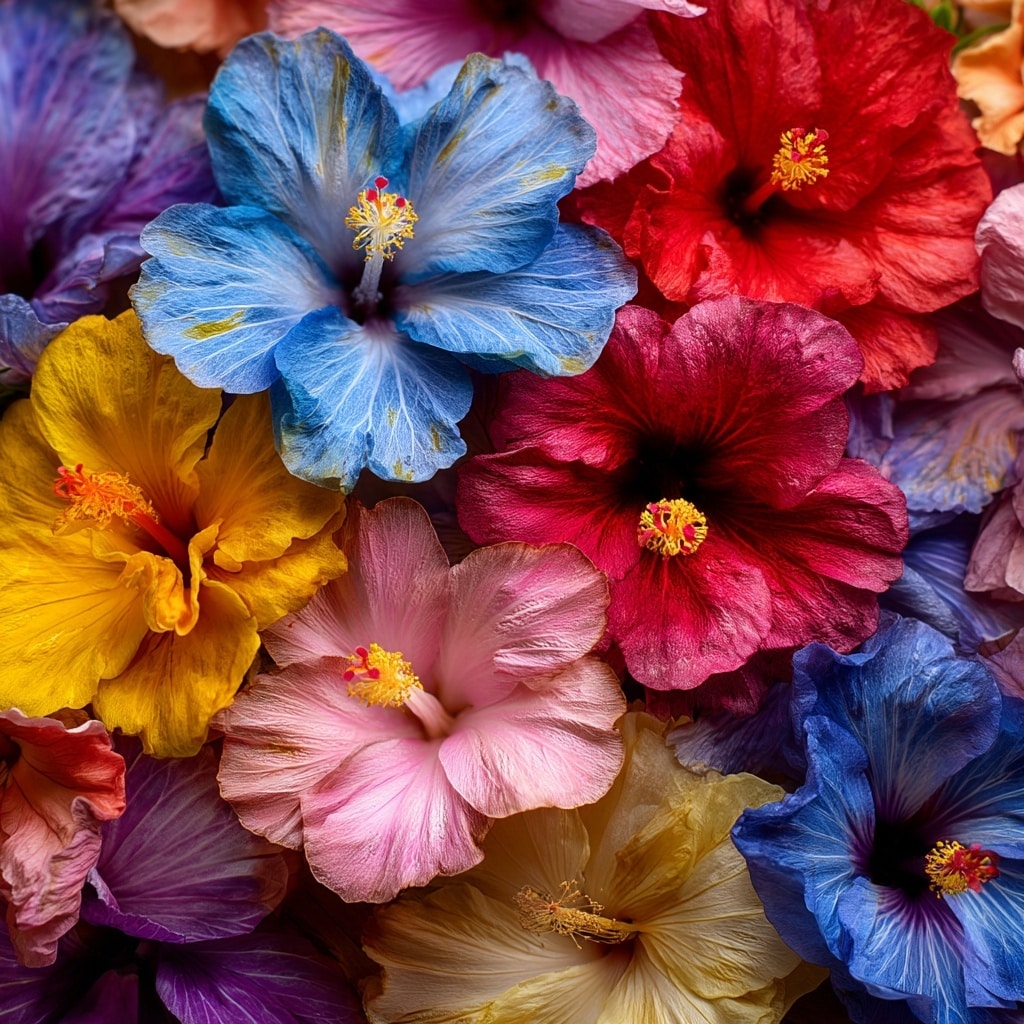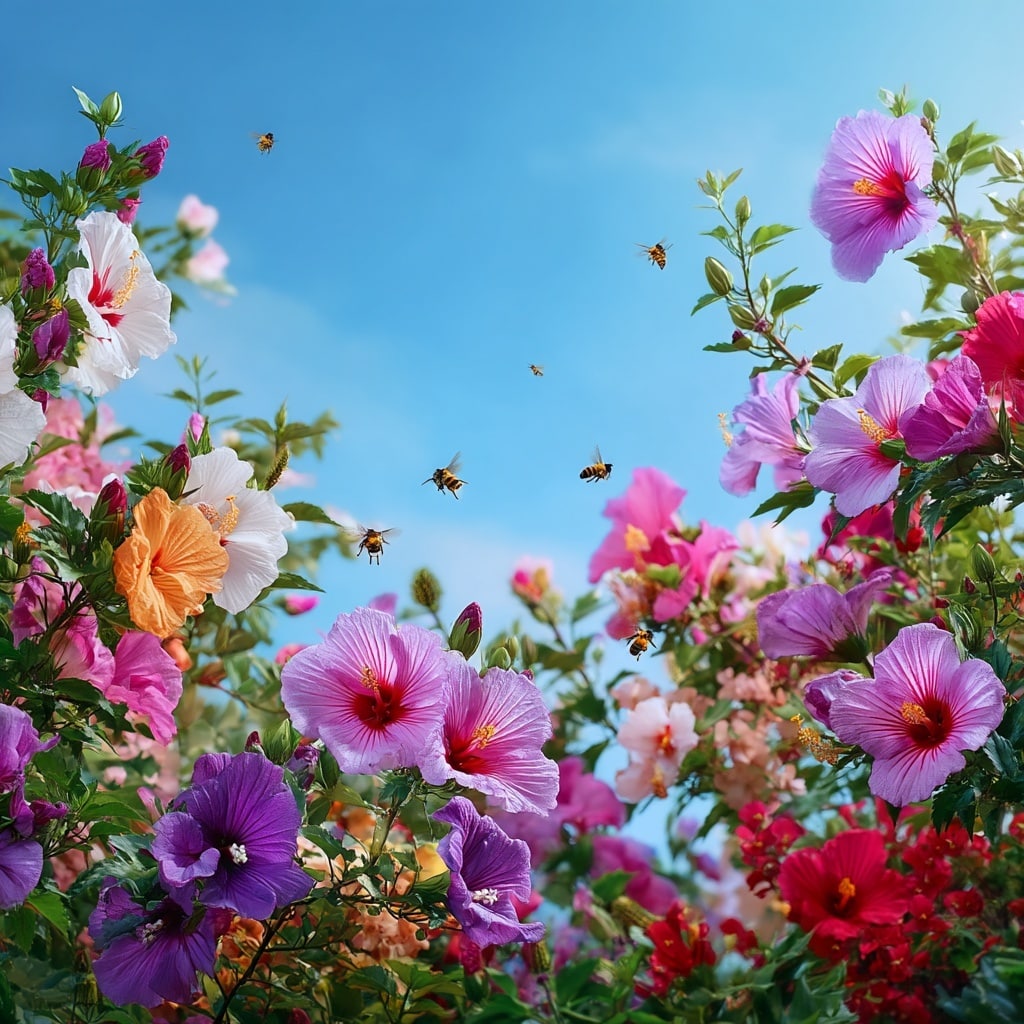Flowers hibiscus are among the most vibrant and rewarding additions to any garden. Known for their large, eye-catching blooms and tropical flair, these plants bring both color and character to outdoor spaces. Originating from warm regions such as Madagascar, Fiji, and Hawaii, hibiscus has become a global favorite for gardeners seeking bold, showy blossoms. Some species can grow impressively tall—up to 10 feet—and spread just as wide, making them a striking choice for landscaping.
First documented in the early 1700s, the global spread of flowers hibiscus inspired botanists to develop countless hybrids, each more dazzling than the last. Whether you’re a novice gardener or a seasoned green thumb, growing hibiscus is a joyful way to transform your yard into a lush, tropical retreat.
Table of Contents
How to Use Hibiscus in the Garden
Adding flowers hibiscus to your garden doesn’t just enhance its beauty — it also boosts functionality. These versatile plants can be grown as vibrant shrubs or pruned into elegant tree forms, making them suitable for various landscape designs. Their lush foliage and striking blooms are perfect for creating visual focal points or natural borders around your yard.
If you’re aiming for privacy, taller hibiscus varieties make excellent flowering hedges or fence liners. For a bold entrance, plant them along pathways or near your front door, where their vivid colors welcome guests and brighten up the space.
Hibiscus also plays a helpful ecological role. Their nectar-rich flowers attract pollinators like bees, butterflies, and hummingbirds, supporting local ecosystems. Gardeners in cooler climates can enjoy hibiscus too—just pot them in containers and bring them indoors during the colder months. In a sunny window or on a bright patio, flowers hibiscus will continue to flourish and provide year-round beauty.
How to Grow Hibiscus Flowers

Growing flowers hibiscus successfully starts with choosing the right location and preparing the soil properly. These sun-loving plants thrive in spots that receive full to partial sunlight—ideally six or more hours of direct sun daily. They’re happiest in warm, sheltered areas that are protected from strong winds, which can damage their delicate blooms.
Start with well-draining, slightly acidic soil (pH between 6.0 and 7.0). If you’re planting young hibiscus from a nursery, dig a hole twice the width of the root ball and about as deep. Space multiple plants about 2 to 3 feet apart to allow room for growth and airflow.
When planting from seed, begin indoors about 12 weeks before your last expected frost. You can also sow seeds outdoors after the last frost date, though this takes longer for the plant to mature. Once planted, add mulch around the base to help retain moisture and protect roots from extreme temperatures. Water regularly—especially during the growing season—to keep the soil consistently moist but not soggy. As the seasons shift, reduce watering to avoid root rot.
With proper setup, your flowers hibiscus will reward you with continuous blooms from summer through fall.
How to Care for Hibiscus Flowers

To get the most out of your flowers hibiscus, proper care is key. While each bloom typically lasts only a couple of days, the plant can produce new flowers continuously throughout the season if given the right conditions.
Temperature is a major factor—hibiscus thrives in a warm range between 65°F and 80°F. Avoid exposing them to cold drafts or frost, which can lead to bud drop or plant damage. If you’re growing hibiscus in containers, bring them indoors when temperatures dip below 50°F.
Pruning is another essential task. Once your hibiscus has matured and the blooming season has ended (typically in late fall or winter), trim away dead or damaged branches to promote healthy regrowth. Pruning also helps shape the plant and encourages more branching, which means more blooms next season.
Feeding your hibiscus regularly supports its vibrant growth. Use a balanced fertilizer with nutrients like potassium and nitrogen. Organic options like fish emulsion or seaweed extract are excellent choices. Start with a diluted solution early in the growing season, then feed every couple of weeks as flowering ramps up. With consistent care, your flowers hibiscus will remain lush, full, and full of life year after year.
Hibiscus Flower Varieties

With over 200 known species, flowers hibiscus come in a dazzling range of shapes, sizes, and colors. Most varieties fall into three main categories: tropical, perennial, and hardy—each with distinct traits suited to different climates.
- Tropical hibiscus (e.g., Hibiscus rosa-sinensis) are the showiest, often bearing bright red, yellow, or orange blooms. However, they’re sensitive to cold and should be brought indoors when temperatures drop.
- Perennial hibiscus, like Hibiscus moscheutos, die back in winter but return each spring. These are excellent for gardeners in temperate climates who want a dramatic floral display without replanting each year.
- Hardy hibiscus varieties are the most resilient. They can survive freezing winters and still deliver impressive blooms the following season.
🌺 Popular Hibiscus Varieties to Consider
- ‘Blue Bird’ (Hibiscus syriacus)
Compact and cold-tolerant, with lavender-blue petals and a dark center. - ‘Giant Rose Mallow’ (Hibiscus moscheutos)
Produces huge blooms in shades of pink and white from midsummer into fall. - ‘Hawaiian Hibiscus’ (Hibiscus rosa-sinensis)
Features iconic yellow petals with a red center—Hawaii’s state flower. - ‘Flower of an Hour’ (Hibiscus trionum)
A unique option with cream-colored petals and a purple throat. - ‘Roselle’ (Hibiscus sabdariffa)
Grown not just for beauty but also for its edible calyces used in teas and herbal remedies.
By selecting the right variety for your region and goals, your flowers hibiscus can be both decorative and functional.
Are Hibiscus Flowers Toxic?

While flowers hibiscus are a stunning addition to any garden, pet owners should exercise caution. Some species, particularly Hibiscus syriacus (commonly known as Rose of Sharon), can be toxic to dogs and cats if ingested.
Pets that consume hibiscus may experience symptoms like vomiting, diarrhea, nausea, and, in more severe cases, dehydration. The toxicity level varies among species, and researchers aren’t entirely sure why certain types are harmful while others are not. Given this uncertainty, it’s best to treat all hibiscus plants as potentially unsafe for pets.
To keep your animals safe:
- Plant hibiscus in fenced or elevated areas that pets can’t access.
- Monitor your pets when they’re in the yard.
- If you suspect ingestion, contact your vet or the Animal Poison Control Center immediately.
While a small nibble may only cause mild irritation, large quantities can lead to more serious reactions. For households with curious pets, extra planning ensures your flowers hibiscus stay beautiful without becoming a hazard.
How to Repot Hibiscus Flowers

As your flowers hibiscus thrive and grow, they’ll eventually outgrow their containers. Repotting is essential for maintaining healthy roots and continued blooming. A good sign it’s time to repot is when roots start poking out of the drainage holes or the plant seems root-bound and stunted.
🧤 What You’ll Need:
- A container 2–4 inches larger in diameter
- Well-draining potting mix
- Pruning shears
- Mulch
🔄 Step-by-Step Repotting Process:
- Prepare the new container with 2 inches of moist, well-draining soil.
- Gently remove the hibiscus from its current pot by tilting and easing it out. Shake off excess soil to expose the roots.
- Loosen or trim the roots if they’re tightly tangled. You can safely prune up to ⅓ of the roots to encourage fresh growth.
- Place the plant into the new container with the root ball sitting 2–4 inches below the rim.
- Backfill with soil, pressing lightly around the base to eliminate air pockets.
- Water thoroughly and top with mulch to retain moisture and protect the roots.
Repotting every 1–2 years helps your flowers hibiscus stay vibrant, especially if grown in containers. With this care, you’ll enjoy their colorful blooms for many seasons to come.
Conclusion
Growing and caring for flowers hibiscus is a rewarding experience that brings bold beauty, tropical charm, and ecological value to your garden. With the right planting location, consistent care, and thoughtful variety selection, hibiscus can thrive in containers or landscapes across a range of climates. Whether you’re looking to create a vibrant privacy hedge, attract pollinators, or simply enjoy their brilliant blooms, hibiscus is a garden staple worth the effort.




